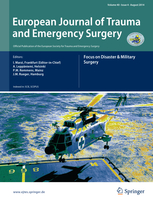
TRAUMA
Proximal femoral nail antirotation versus dynamic hip screw in trochanteric fracture
Eur J Trauma Emerg Surg. 2015 Aug;41(4):393-400.198 patients over the age of 65 with unstable trochanteric fractures were randomized to fixation with either a proximal femoral nail antirotation (PFNA) or dynamic hip screw (DHS). The purpose of the study was to compare the outcomes of these methods up to 6 months after surgery. The PFNA group was associated with a significantly shorter operative and fluoroscopy time, shorter hospital stay, and lower blood loss compared compared to the DHS group. Complication rates, tip-apex distance, screw cutout incidence and recovery of walking ability were similar between groups.
Unlock the full ACE Report
You have access to {0} free articles per month.Click below to unlock and view this {1}
Unlock NowCritical appraisals of the latest, high-impact randomized controlled trials and systematic reviews in orthopaedics
Access to OrthoEvidence podcast content, including collaborations with the Journal of Bone and Joint Surgery, interviews with internationally recognized surgeons, and roundtable discussions on orthopaedic news and topics
Subscription to The Pulse, a twice-weekly evidence-based newsletter designed to help you make better clinical decisions
Exclusive access to original content articles, including in-house systematic reviews, and articles on health research methods and hot orthopaedic topics
Or upgrade today and gain access to all OrthoEvidence content for just $1.99 per week.
Already have an account? Log in


Subscribe to "The Pulse"
Evidence-Based Orthopaedics direct to your inbox.
{0} of {1} free articles
Become an OrthoEvidence Premium Member. Expand your perspective with high-quality evidence.
Upgrade Now












































































